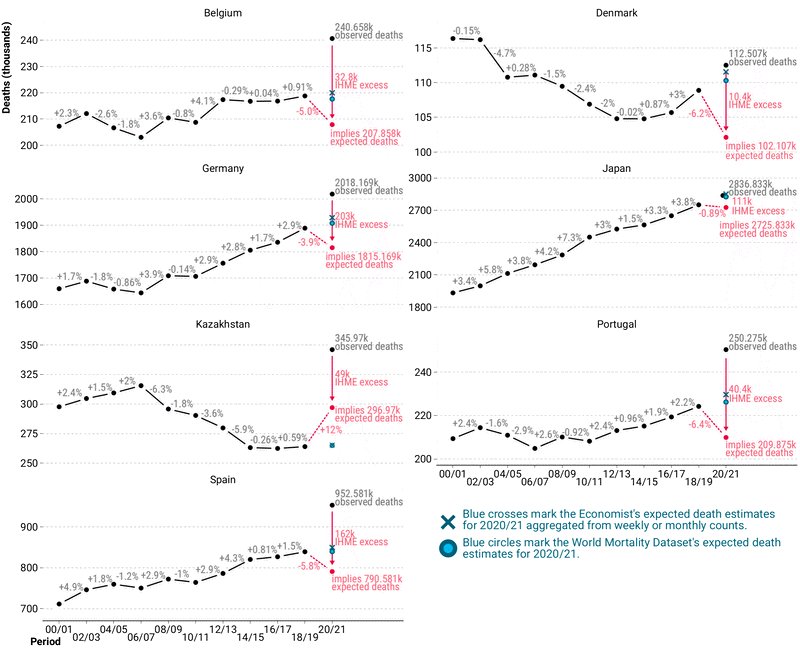To estimate the COVID-19 death toll, the COVID-19 Excess Mortality Collaborators1 have presented excess mortality estimates for 2020–21 for all countries in the world. We argue that for many countries, these estimates are implausible because they imply an unrealistic number of expected deaths, inconsistent with trends before the pandemic. A case in point is Japan, where the authors estimated 111 000 (95% CI 103 000–116 000) excess deaths from Jan 1, 2020, to Dec 31, 2021—an order of magnitude higher than the estimate by The Economist2 (12 000) and qualitatively different from the World Mortality Dataset’s3 negative estimate (–13 100). The COVID-19 Excess Mortality Collaborators define excess mortality as “the difference between reported all-cause mortality […] and what would have otherwise been observed without the COVID-19 pandemic”. For Japan, 2 836 833 deaths were observed in 2020–21. The estimate of 111 000 excess deaths thus implies 2 725 833 expected deaths. The expected deaths are 0·9% lower than the number of observed deaths in 2018–19 (2 750 245), suggesting that in the absence of the COVID-19 pandemic there would have been a drop in death counts.
Publication • Feb 11, 2023

